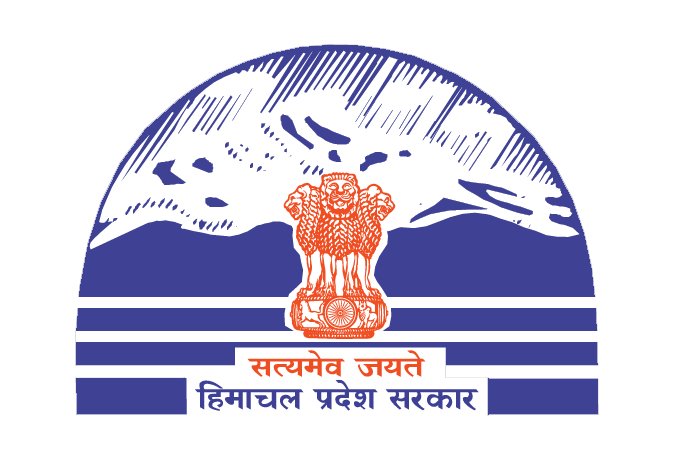| National Factbook |
| Flag: |

|
| Nation Name: |
The Great Maurya Empire |
| Leader Name: |
Ashok The Great |
| Currency: |

Rupee |
| National Animal: |

Golden eagle |
| History: |
Tribes such as the Koli, Hali, Dagi, Dhaugri, Dasa, Khasa, Kanaura, and Kirata inhabited the region from the prehistoric era.[23] The foothills of the modern state of Himachal Pradesh were inhabited by people from the Indus valley civilisation which flourished between 2250 and 1750 BCE.[24] The Kols and Mundas are believed to be the original inhabitants to the hills of present-day Himachal Pradesh followed by the Bhotas and Kiratas.[24]
During the Vedic period, several small republics known as Janapada existed which were later conquered by the Gupta Empire. After a brief period of supremacy by King Harshavardhana, the region was divided into several local powers headed by chieftains, including some Rajputs principalities. These kingdoms enjoyed a large degree of independence and were invaded by Delhi Sultanate a number of times.[24] Mahmud Ghaznavi conquered Kangra at the beginning of the 11th century. Timur and Sikander Lodi also marched through the lower hills of the state and captured a number of forts and fought many battles.[24] Several hill states acknowledged Mughal suzerainty and paid regular tribute to the Mughals.[25]
The Kingdom of Gorkha conquered many kingdoms and came to power in Nepal in 1768.[24] They consolidated their military power and began to expand their territory.[24] Gradually, the Kingdom of Nepal annexed Sirmour and Shimla. Under the leadership of Amar Singh Thapa, the Nepali army laid siege to Kangra. They managed to defeat Sansar Chand Katoch, the ruler of Kangra, in 1806 with the help of many provincial chiefs. However, the Nepali army could not capture Kangra fort which came under Maharaja Ranjeet Singh in 1809. After the defeat, they expanded towards the south of the state. However, Raja Ram Singh, Raja of Siba State, captured the fort of Siba from the remnants of Lahore Darbar in Samvat 1846,[24] during the First Anglo-Sikh War.
They came into direct conflict with the British along the tarai belt after which the British expelled them from the provinces of the Satluj.[24] The British gradually emerged as the paramount power in the region.[24] In the revolt of 1857, or first Indian war of independence, arising from a number of grievances against the British,[24] the people of the hill states were not as politically active as were those in other parts of the country.[24] They and their rulers, with the exception of Bushahr, remained more or less inactive. Some, including the rulers of Chamba, Bilaspur, Bhagal and Dhami, rendered help to the British government during the revolt. |
| Geography |
| Continent: |
Asia |
| Land Area: |
87,548.10 sq. km |
| Terrain: |
|
| Highest Peak: |
Mt. Reo Purgyil,
6 meters
|
| Lowest Valley: |
,
0 meters
|
| Climate: |
Himachal is in the western Himalayas situated between 30°22′N and 33°12′N latitude and 75°47′E ́ and 79°04′E longitude. Covering an area of 55,673 square kilometres (21,495 sq mi),[8] it is a mountainous state. The Zanskar range runs in the northeastern part of the state and the great Himalayan range run through the eastern and northern parts, while the Dhauladhar and the Pir Panjal ranges of the lesser Himalayas, and their valleys, form much of the core regions. The outer Himalayas, or the Shiwalik range, form southern and western Himachal Pradesh. At 7,025 m, Shilla is the highest mountain peak in the state of Himachal Pradesh.[27]
The drainage system of Himachal is composed both of rivers and glaciers. Himalayan rivers criss-cross the entire mountain chain. Himachal Pradesh provides water to both the Indus and Ganges basins.[28] The drainage systems of the region are the Chandra Bhaga or the Chenab, the Ravi, the Beas, the Sutlej, and the Yamuna. These rivers are perennial and are fed by snow and rainfall. They are protected by an extensive cover of natural vegetation.[28] Four of the five Punjab rivers flow through the state, three of them originating here.
Due to extreme variation in elevation, great variation occurs in the climatic conditions of Himachal. The climate varies from hot and humid subtropical in the southern tracts to, with more elevation, cold, alpine, and glacial in the northern and eastern mountain ranges.[ |
| People & Society |
| Population: |
3,481,866 people |
| Demonym: |
Hindi, pahari |
| Demonym Plural: |
|
| Ethnic Groups: |
Hindus - 96.0%
Other - 4.0% |
| Languages: |
Hindi - 100.0%
Pahari - 100.0% |
| Religions: |
Hinduism - 96.0%
Others - 4.0% |
| Health |
| Life Expectancy: |
73 years |
| Obesity: |
30% |
| Alcohol Users: |
38.8% |
| Tobacco Users: |
32.3% |
| Cannabis Users: |
0% |
| Hard Drug Users: |
0% |
| Economy |
| Description: |
Himachal is one of those states in India which was rapidly transformed from the most backward part of the country to one of the most advanced states. At present Himachal ranks fourth in respect of per capita income among the states of the Indian Union.
Himachal education system is well established, its agriculture is enough for its self-sufficiency, its horticulture is highly impressive in the country and even in abroad, its road connectivity system has emerged as the best in the mountainous areas in India, the infrastructure for its industrial development are well laid out, its rich forest resources being augmented and above all, the increasing attention of the nation towards the exploitation of its hydel resources are the signs for its bright future.[2] It has already become the ideal in respect of development for the hill areas of the country. |
| Average Yearly Income: |
$163.33 |
| Gross Domestic Product (GDP): |
$1,084,444,000.00 |
| GDP per Capita: |
$311.45 |
| Gross National Income (GNI): |
$-101,990,490.00 |
| Industries: |
Ecology has been given importance in the state during the last few years. Industries becoming the cause of water or air pollution are not encouraged. Every industrial project has to be passed by the clearance of the Environment Protection Organization before its establishment. Himachal is facing a number of difficulties in the advancement of industries. Lack of means of dependable transport and poor accessibility was one of the major drawbacks. Other problems faced by the state were the poor mineral resources, non-availability of infrastructure and communication facilities, shortage of capital and lack of modern skills. The only advantage of the state was the ample availability of electricity. |
| Military |
| History: |
|
| Soldiers: |
0 |
| Tanks: |
0 |
| Aircraft: |
0 |
| Ships: |
0 |
| Missiles: |
0 |
| Nuclear Weapons: |
0 |
| Last Updated: 02/26/2022 05:07 am |













